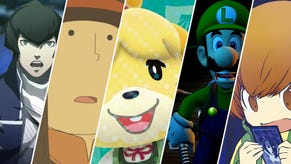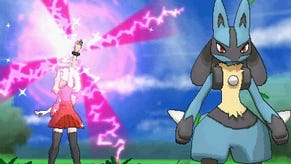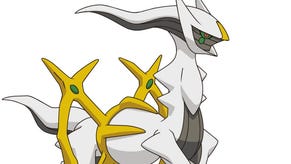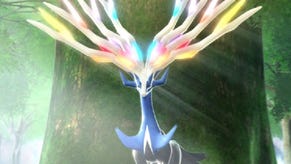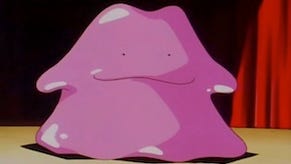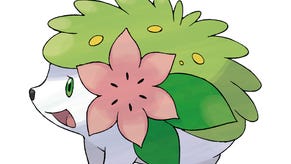Pokémon Experts Discuss What X and Y's Changes Mean for Competitive, Pro-Level Play
We talk to the competitive Pokémon community as the game heads to a new platform with a whole bucket full of new rules.
This article first appeared on USgamer, a partner publication of VG247. Some content, such as this article, has been migrated to VG247 for posterity after USgamer's closure - but it has not been edited or further vetted by the VG247 team.
There's more to Pokémon than Pikachus and hot, new Mega Evolutions.
Over the last 17 years, Game Freak has slowly been adding more depth to the Pokémon series through hidden stats, new abilities, different attacks, and varied creatures (the roster now sits at a staggering 718 different Pokémon). Now, with the latest two entries, X and Y, the franchise may be seeing its most divisive revision yet with the addition of hidden second abilities, the nerfing of popular tactics, and a brand new creature type, Fairy.
Pokémon X and Y bring many changes to the series, and no group has taken more notice than the competitive community. Although the game has been out worldwide for only a few days, the pro player scene is working overtime to decipher the games' new additions and what they mean to this year's competition. We spoke with some of the most competitive trainers in Pokémon, who participated in this year's Pokémon World Video Game Championships (VGC), to get their take on these new changes and where it's going to take the circuit of pro trainers.
Aaron Zheng, who came third in this year's Masters tournament, puts it eloquently. "I think for this generation especially, all the changes they have made are tailored to competitive players," he says.
"With any new generation, the thing that affects competitive play the most are the new Pokémon," he adds. "The interesting thing about X and Y is there aren't actually that many new Pokémon, and I haven't seen many of them that are usable or might affect the Metagame [the Pokémon community's word for competitive play]."

With this generation, Game Freak has added only 69 completely new Pokémon, not counting the Mega Evolutions. Of those, a number of choice Pokémon stand out, particularly Hawlucha, a rare fighting-flying type sweeper with an ability to avoid paralysis, and Gourgeist, with an attack called Trick-or-Treat that will turn your opponent into a ghost type. On the whole, though, X and Y demonstrate a greater emphasis on overhauling the underlying game.
"If you look at all the old moves, they've kind of toned down the power of almost all of them," Zheng says "The game seems to be headed towards a more defense-oriented game state."
These de-powered moves include popular attacks, some of which have been part of the series since the very beginning. Among these nerfs you'll find Thunderbolt, Surf, Muddy Water, Flamethrower, and Ice Beam. In a game where an attack's ability to hit hard is governed by a multitude of factors, nerfing an attack's base power by even a small amount can cripple its effectiveness.
"Hidden Power going down to 60 [base power] is really big, too," observes Zheng. "Before, it was basically a way to OHKO a Pokémon you normally don't even have the type of attack of."
This isn't the first time these nerfs have happened by any means. Three-time Pokémon VGC winner Ray Rizzo recalls that Game Freak tweaked Hypnosis back to its original 60-percent accuracy in the Diamond/Pearl/Platinum generation. "I definitely think Game Freak takes a look at last year, what's popular and overpowered, and balances the game from that," theorizes Rizzo.
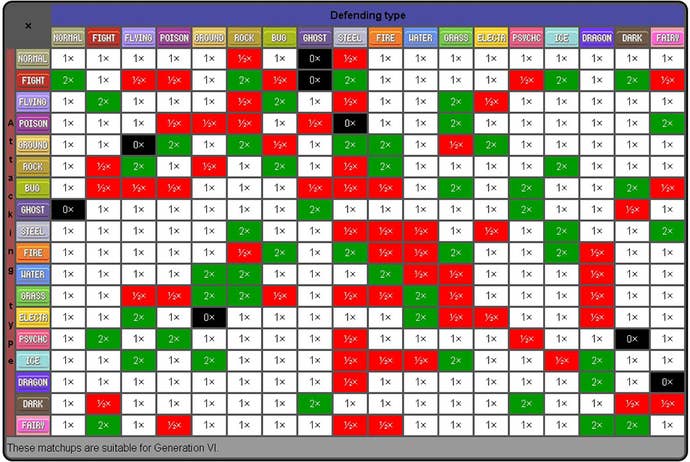
"Sometimes Pokémon rounds end in just four turns" Rizzo explains. "So adding more defensive Pokémon and toning down moves is going to slow down the game and make it a more strategic."
Besides specifically knocking down the power of specific moves, Game Freak introduced larger changes that will affect entire types. For a long time one of the most powerful combos in the game was a Timid-nature Latios using Draco Meteor, buffing the attack even further by holding a Dragon Gem. For most of the franchise's history, Dragons have been enjoyed the freedom to dominate anything besides Steel and Ice types. The new Fairy type changes that with a complete immunity to Dragon attacks.
As storybook-like as Dragons and Fairies may sound, this new matchup could potentially serve as the single biggest change to the game. After all, the type chart has remained unchanged for nearly 13 years. Stephen Morioka, a long-time VGC participant with eight years of experience as a competitive trainer, sees the Fairy type's potential to rise or flop early on.
"Initially, I think Fairy-types will play an interesting role because they're brand new," Morioka says. "Besides all the practice you put in playing with them, if people bring in Gardevoir or Clefable to a tournament and it does well, you can see people starting to understand that's a cool Pokémon because its type changed and it revolutionizes the rest of the metagame."
Arash Ommati, the first Italian world champion from this year's VGC, is similarly unsure of what the future holds, though he offers a new, possible prospect. "It's hard to say now, but I think that Gardevoir and Togekiss will probably be usable. Especially Togekiss, because now it gets the Fairy/Flying typing. With its ability to redirect Dragon-type attacks with Follow Me, it will be pretty important to the new metagame."
"The Dragon type was so strong up till now because the only type which was able to resist these attack was steel," he says. "As a consequence, both Dragon and Steel were really abused. Now, with the addition of Fairies, Dragons of course are weakened. Steel types are no longer resistant to Ghost and Dark, so it's weakened as well."
On the other hand, Barry Anderson, a recent but knowledgeable newcomer to the United Kingdom and World VGC, finds the change unnecessary. "Personally, I don't think Dragon types were too overpowered because we did EVing [specifically] to survive a timid Latios combo." Anderson says. "If something was going to be bulky, it had to survive that. But I do think Fairy types being immune to Dragon is a little bit farfetched because as a competitive player, we're always thinking about what our best moves would be."
Instead of obsessing entirely over Fairies, the community is focused on the other subsurface changes made to Pokémon types. For few things, Grass types are now immune to spore attacks like Sleep Power; similarly Electric types can no longer be paralyzed by attacks like Thunderwave. These might seem like very small changes, but for the competitive scene it could end the careers of Thundurus and Amoonguss as popular (and perhaps overused) Pokémon.
Another thing that could rebalance the competitive teams forever is weather. Previously, Pokémon like Tyranitar were able whip up sandstorms out of nowhere and have them on the field for the rest of the battle unless you activated another weather move. But in X and Y, these weather inducing abilities are now limited to only five turns.
Morioka explains, "Rain is one of the most general dangerous strategies to use -- dangerous as in it's offensively deadly. If your team can't handle rain, then your opponent can sweep through you pretty quickly. Weather has always been a big factor over almost every single VGC season, and the biggest battle is usually rain versus sand."
Five turns is still a long time, though, in double battles where rounds usually last for seven or eight turns, while longer games go to 14 to 15 turns. However, Ommati see this as another way of opening up the team-building aspect of the game. "If I had to beat rain I would probably put a Tyranitar on my team, but now I can just stall out five turns and I don't need to dedicate a space to a weather inducer."

The most heavily publicized change to X and Y is, of course, the addition of Mega Evolutions. Not only do they promise overwhelming power for any Pokémon capable of these pinned-on transformations, they're also bringing many of the original generation Pokémon back into the picture.
But, Zheng says things are not as simple as just having overwhelming power, because in the VGC it was always more important to take attacks rather than dish them out. "Mega Evolutions are really interesting because there are a lot of them right now, and each of them has their own abilities and is super powerful. But you're going to be restricted to only one per team. Everyone will build around the Mega Evolution Pokémon because they are really strong sweepers. And then you're going to want to pick strong defensive Pokémon to counter the Mega Evolutions."

Anderson similarly sees the potential for Mega Evolution to make big waves as well. However, to counter this, the new game also introduces several heavily defensive Pokémon like Goodra and Aegislash.
"Goodra is interesting because last generation brought in Pokémon like Darmanitan and Conkeldurr, which all had massive attack stats. And now with X and Y, we've got these new Mega Evolutions, which are going to have even higher attack power.
"It's a game where Pokémon are getting more and more powerful and with a dragon like Goodra, it seems like such a big special defensive tank," he adds. "So I think it's an example of Pokémon getting more and more defensive because I know Aegislash has a really big defense as well."
Ommati agrees there's been a sort of Pokémon arms race. "The influence of this overwhelming attack power with Mega Evolution is players will need overwhelming defense to take those attacks, Ommati says. "I don't think [Mega Evolutions] will change the situation, but maybe the metagame will get even more wonky."
And how will the community at large respond? I asked Zheng, who has just returned from the VGC Regionals in San Francisco, and for now he thinks it's too early to gauge. For one thing, the Pokémon Company hasn't announced the rule set for the upcoming Pokémon Winter Regional Championships, which will take place in January 2014. Another big question is how players will set up their teams with older Pokémon, or whether the new season will only use the Kalos Pokédex from X and Y.
"I think the community is really excited, but for the competitive aspect I think we're all a bit nervous about what's going to happen," Zheng explains. "We're all in the dark right now, I expect that they are going to release the rules soon. But the most difficult thing will be getting a team together, because the Pokémon Bank [which allows legacy Pokémon to be transferred into X and Y] comes out right before winter regionals. There are only three weeks to really transfer your Pokémon over, so we're not sure whether that's going to be thing or if it's not even going to come into play at all."
For the most part, the community welcomes X and Y's changes, even if some seem like a kick in the pants to get competitors to change up their teams. The new addition of super-training is a bit of miss with the VGC crowd, who already knows how to train their creatures' hidden stats. But, Zheng says it could help to grow a larger competitive multiplayer community heading into a serious e-Sport. What it can really do is level the playing field for causal players—at least stat-wise—making it so everyone can focus more on strategies.
"I think it's growing, honestly," Zheng adds. "X and Y are really reviving the game. Game Freak is really are making a game that tailors to the competitive and casual players, and the official Pokémon company that actually holds these VGC events are doing a great job."
"Last year we had an official stream with commentary and over 30,000 viewers for the first time. I think it's only going to grow from there, we're going to have even more exciting matches, more streaming, more commentary. In five years, I think Pokémon is going to keep growing."
Top image provided by JelloJolteon2000

